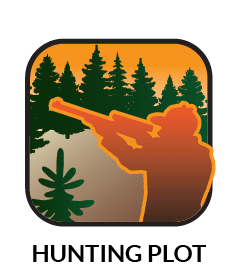Paper Birch
Plant Type: Dormant, bare-root
Zones: 2-6
Soil Type: Clay, Loamy & Sandy Soils
Site Selection: Full Sun, Partial Sun
Mature Height & Width: 50-70' Height and 25-35' Spread
Growth Rate: Moderate - 12-24" per year on average
Moisture Requirements: Dry to wet soils






Paper Birch
Betula papyrifera
The Paper Birch displays the classic chalky white bark of a birch tree and makes a great contrast to almost any landscape. The golden color of this tree in autumn is quite a sight and the unique bark color provides great winter interest. The Paper Birch has characteristics that make it a favorite as an ornamental specimen or planted in clumps of 3.
This selection is also known as the White Birch and the Canoe Birch.
The Paper Birch likes moist areas but will do well in upland areas as well. Will thrive with average moisture, but does have some drought tolerance. The Paper Birch is the state tree of New Hampshire.
Fun Facts: Native Americans and early settlers used to use the peeling bark to write messages on, hence the name Paper Birch. Also, the bark from this birch was once used for canoe construction.
Common uses for the Paper Birch include:
- Ornamental - beautiful and unique white bark
- Specimen or planted in groups
- Great wildlife value
- Part of a windbreak or riparian buffer planting
Wildlife love the Paper Birch tree. White-tailed deer eat considerable amounts of Paper Birch leaves in autumn. The seeds are a food source for Voles and Shrews as well as Siskins, Chickadees and Redpolls. Cavity nesting birds such as Woodpeckers, Chickadees, Nuthatches and Swallows love this tree. Ruffed Grouse eat its catkins and buds. In all, the Paper Birch is used by over 30 different types of birds and mammals.






